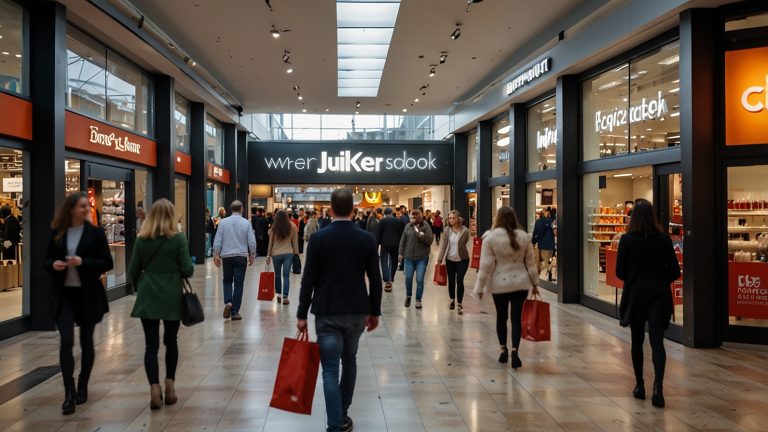As the cryptocurrency landscape continues to navigate a rollercoaster of highs and lows, MANTRA Chain Founder has stepped into the spotlight with a decisive 4-step plan aimed at stabilizing its $OM token and rebuilding trust with its community.
Announced on April 17, 2025, via a post from @cryptodotnews on X, this initiative comes at a critical juncture following a recent market crash that left investors reeling. For those of us who’ve watched the crypto space evolve over the years, this move feels like a breath of fresh air—a rare instance of a project taking accountability and laying out a roadmap with tangible actions.
A Plan Rooted in Transparency and Action
The four pillars of MANTRA Chain’s strategy are as follows:
-
$OM Token Support Plan for Buyback and Burn (TBA)
-
Burning of @jp_mullin888’s and the Team’s Allocation
-
Collaboration with CEXs for a Retrospective Analysis of the Crash
-
Launch of a Transparency Dashboard
Each step is designed to address the immediate concerns of token holders while fostering long-term confidence in the project. Let’s break it down.
Step 1: A Buyback and Burn Program on the Horizon
The first piece of the puzzle is the $OM token support plan, which promises both a buyback and a supply burn program. Details are yet to be announced (marked as TBA), but the intention is clear: reduce the circulating supply of $OM to potentially bolster its value. For those of us who’ve seen similar strategies play out—think Binance’s BNB burns or Ethereum’s EIP-1559—this could be a game-changer if executed well.
The anticipation is palpable, and I can’t help but recall late-night discussions with fellow crypto enthusiasts, debating whether such moves are bandaids or true solutions. MANTRA’s commitment to releasing specifics soon suggests they’re aware of the scrutiny and are preparing to deliver.
Step 2: Leadership Leading by Example
Perhaps the most striking element is the public commitment from John Patrick Mullin, MANTRA’s CEO, to burn his personal allocation along with the team’s. This isn’t just a corporate decision; it’s a personal sacrifice that resonates deeply with the community. I remember the skepticism that clouded the 2017 ICO boom when team allocations were often hoarded, only to be dumped later. Mullin’s move feels like a throwback to the early days of crypto, when founders like Vitalik Buterin inspired trust through transparency. It’s a human touch in an industry often criticized for its opacity, and it’s hard not to feel a flicker of hope that this could set a new standard.
Step 3: Unpacking the Crash with CEX Partners
The third step involves working with centralized exchanges (CEXs) to conduct a retrospective analysis of the events leading to the crash. This collaborative approach is a nod to the interconnected nature of crypto markets, where exchanges play a pivotal role. As someone who’s spent hours poring over trading charts, I know how elusive the root causes of a crash can be—whales, hacks, or simple panic selling.
By inviting CEX partners to the table, MANTRA aims to peel back the layers, offering clarity that could prevent future downturns. It’s a bold ask, and success will depend on the willingness of these partners to share data, but the intent alone is a step forward.
Step 4: A Dashboard for Market Transparency
Finally, the launch of a transparency dashboard with live balances of tokenomics buckets is a promise that could redefine how projects engage with their audiences. In an era where on-chain data is king, this tool could empower investors with real-time insights into $OM’s distribution.
I can imagine the late-night scroll sessions, with traders and hodlers alike refreshing the dashboard, debating allocations over coffee. It’s a practical step that aligns with the ethos of decentralization, giving power back to the people who matter most—the community.
NEW: @MANTRA_Chain releases 4 step plan going forward.
1⃣ $OM token support plan for buyback and burn TBA
2⃣ @jp_mullin888‘s and the team’s allocation to be burned
3⃣ Work with CEXs to provide a retrospective analysis of events leading to the crash
4⃣ Transparency dashboard pic.twitter.com/SslV4aab4N— crypto.news (@cryptodotnews) April 17, 2025
Planned Actions: A Closer Look
Beyond the four steps, MANTRA has outlined specific actions to bring this plan to life. The $OM token support plan will detail both the buyback and burn mechanisms, a dual approach that could stabilize supply while signaling commitment. Mullin’s public pledge to burn his team’s allocation adds a layer of accountability that’s rare in this space.
Meanwhile, the invitation to CEX partners to clarify trading activities during the crash hints at a willingness to confront uncomfortable truths. And the dashboard? It’s a game-changer, promising live data that could turn speculation into informed decision-making.
As I reflect on this, I’m reminded of a friend who lost a significant chunk of his portfolio in the 2021 crash. He’d often lament the lack of visibility into project moves. MANTRA’s plan feels like it’s addressing that pain point head-on, and it’s hard not to root for them.
The Human Side of Crypto Recovery
What strikes me most about this announcement is the human element. Mullin’s decision to burn his allocation isn’t just a financial move—it’s a statement. It says, “We’re in this together.” In a market where faceless wallets and anonymous teams dominate, that personal touch is refreshing. I’ve sat through countless AMAs where promises were made and forgotten, so seeing a CEO put his money where his mouth is feels like a throwback to the scrappy, idealistic days of Bitcoin’s rise.
The community’s reaction, too, adds a layer of warmth to this story. On X, users are buzzing—some skeptical, others cautiously optimistic. One post I stumbled across compared Mullin to a captain going down with the ship, though in a positive light. It’s these moments that remind us crypto isn’t just code and charts; it’s people, hopes, and resilience.
Challenges Ahead
Of course, this plan isn’t without hurdles. The buyback and burn’s success hinges on execution—poor timing or insufficient funds could backfire. The CEX collaboration requires trust, which is in short supply after years of exchange scandals. And the dashboard, while promising, will need to be user-friendly and secure to gain traction. As someone who’s seen projects overpromise and underdeliver, I’ll be watching closely. But the intent is there, and that’s a start.
A Turning Point for MANTRA?
As of April 17, 2025, MANTRA Chain’s 4-step plan marks a potential turning point. For investors battered by the crash, it offers a lifeline. For the crypto industry, it’s a case study in accountability. I can’t help but feel a surge of excitement—mixed with a healthy dose of caution. If MANTRA pulls this off, it could inspire a wave of similar moves across the space. And if they don’t? Well, it’ll be another lesson in the wild west of crypto.
For now, all eyes are on Mullin and his team. The next few weeks will reveal whether this is a genuine recovery or another false dawn. But one thing’s certain: in a market defined by volatility, MANTRA’s bold step forward has given us all something to talk about. Whether you’re a seasoned trader or a newbie hodler, it’s worth keeping this story on your radar.












 Bitcoin
Bitcoin  Ethereum
Ethereum  Tether
Tether  XRP
XRP  Wrapped SOL
Wrapped SOL  USDC
USDC  TRON
TRON  Lido Staked Ether
Lido Staked Ether  Cardano
Cardano  Avalanche
Avalanche  Toncoin
Toncoin